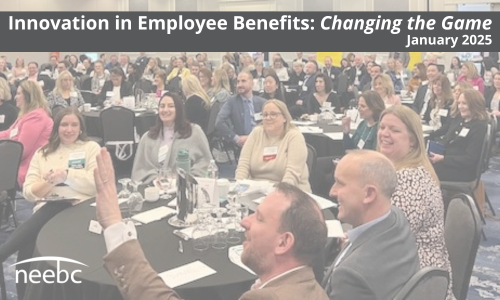Global Perspectives on Wellbeing: Lessons from Around the World for All Organizations
 In today’s complex world of work, employee wellbeing has become more than a buzzword—it’s a critical pillar of sustainable business performance. Yet, approaches to wellbeing vary significantly across countries, shaped by cultural norms, government policy, and societal expectations. From Scandinavia’s flexible work structures to Japan’s growing mindfulness culture, global perspectives offer valuable lessons for organizations looking to create more inclusive and effective wellbeing strategies (globally or domestically).
In today’s complex world of work, employee wellbeing has become more than a buzzword—it’s a critical pillar of sustainable business performance. Yet, approaches to wellbeing vary significantly across countries, shaped by cultural norms, government policy, and societal expectations. From Scandinavia’s flexible work structures to Japan’s growing mindfulness culture, global perspectives offer valuable lessons for organizations looking to create more inclusive and effective wellbeing strategies (globally or domestically).
As companies operate across borders—or manage multicultural teams—there’s an opportunity to learn from international wellbeing models and adapt them to diverse workforces. Below are five approaches to employee wellbeing from countries outside the US and across the globe and what organizations can take away from them.


 Technology is transforming health care with enhanced data insights, personalized solutions, and simpler tools that help members achieve their health ambitions.
Technology is transforming health care with enhanced data insights, personalized solutions, and simpler tools that help members achieve their health ambitions. Pelvic floor pain for women can be caused by many factors. Your employees or their family members shouldn’t have to suffer alone. Learn about the different treatment options and expert recommendations that you can share with your workforce and their loved ones.
Pelvic floor pain for women can be caused by many factors. Your employees or their family members shouldn’t have to suffer alone. Learn about the different treatment options and expert recommendations that you can share with your workforce and their loved ones.  For a third consecutive year, The NEEBC community gathered to connect and learn about ever-developing innovations making a difference for the workforce. NEEBC’s January 23
For a third consecutive year, The NEEBC community gathered to connect and learn about ever-developing innovations making a difference for the workforce. NEEBC’s January 23 At a time when everything seems to cost a little more, employees may be hesitant to use health care services — especially if they do not know the cost beforehand. For many, cost can be a top barrier to accessing health care. In fact, 7.1% of Massachusetts adults avoided health care due to costs in the previous year, according to the 2023 America’s Health Rankings report.1 While across the U.S., 43% of insured working-age adults with employer-sponsored health plans said it was very or somewhat difficult to afford their health care.2
At a time when everything seems to cost a little more, employees may be hesitant to use health care services — especially if they do not know the cost beforehand. For many, cost can be a top barrier to accessing health care. In fact, 7.1% of Massachusetts adults avoided health care due to costs in the previous year, according to the 2023 America’s Health Rankings report.1 While across the U.S., 43% of insured working-age adults with employer-sponsored health plans said it was very or somewhat difficult to afford their health care.2 By 2030, all Baby Boomers in the U.S.—those born between 1946 and 1964—will have turned 65, with about 11,000 of them coming of age every day until then.1 But as these workers make the transition to retirement, one concern that’s top of mind for many is how they will obtain and pay for health care. “People are generally a little uncomfortable thinking about health care in retirement because they are going into the unknown, it’s complex, and people fear doing it wrong and paying huge penalties,” one benefits leader said. “It’s important to find a way that makes it simple for people to understand and less scary.”
By 2030, all Baby Boomers in the U.S.—those born between 1946 and 1964—will have turned 65, with about 11,000 of them coming of age every day until then.1 But as these workers make the transition to retirement, one concern that’s top of mind for many is how they will obtain and pay for health care. “People are generally a little uncomfortable thinking about health care in retirement because they are going into the unknown, it’s complex, and people fear doing it wrong and paying huge penalties,” one benefits leader said. “It’s important to find a way that makes it simple for people to understand and less scary.” "Benefits by Life Stages" was the overwhelming response to a recent NEEBC survey gauging interest in various benefit topics. Perhaps this response shouldn’t be a surprise. For the first time ever, workplaces may have up to six generations in their workforce1, spanning across as many life stages2. While each generation is typically at a different life stage with unique benefit priorities, there may be some overlap. As shown in the diagram3 below, each stage has unique employee benefits priorities. Recognizing and addressing these diverse needs – both by life stages and generations – and reconsidering a one-size-fits-all approach to plan design may lead to a more engaged, satisfied, and loyal workforce.
"Benefits by Life Stages" was the overwhelming response to a recent NEEBC survey gauging interest in various benefit topics. Perhaps this response shouldn’t be a surprise. For the first time ever, workplaces may have up to six generations in their workforce1, spanning across as many life stages2. While each generation is typically at a different life stage with unique benefit priorities, there may be some overlap. As shown in the diagram3 below, each stage has unique employee benefits priorities. Recognizing and addressing these diverse needs – both by life stages and generations – and reconsidering a one-size-fits-all approach to plan design may lead to a more engaged, satisfied, and loyal workforce. Navigating the intricacies of Flexible Spending Accounts (FSAs) can be challenging for both employers and employees.
Navigating the intricacies of Flexible Spending Accounts (FSAs) can be challenging for both employers and employees.